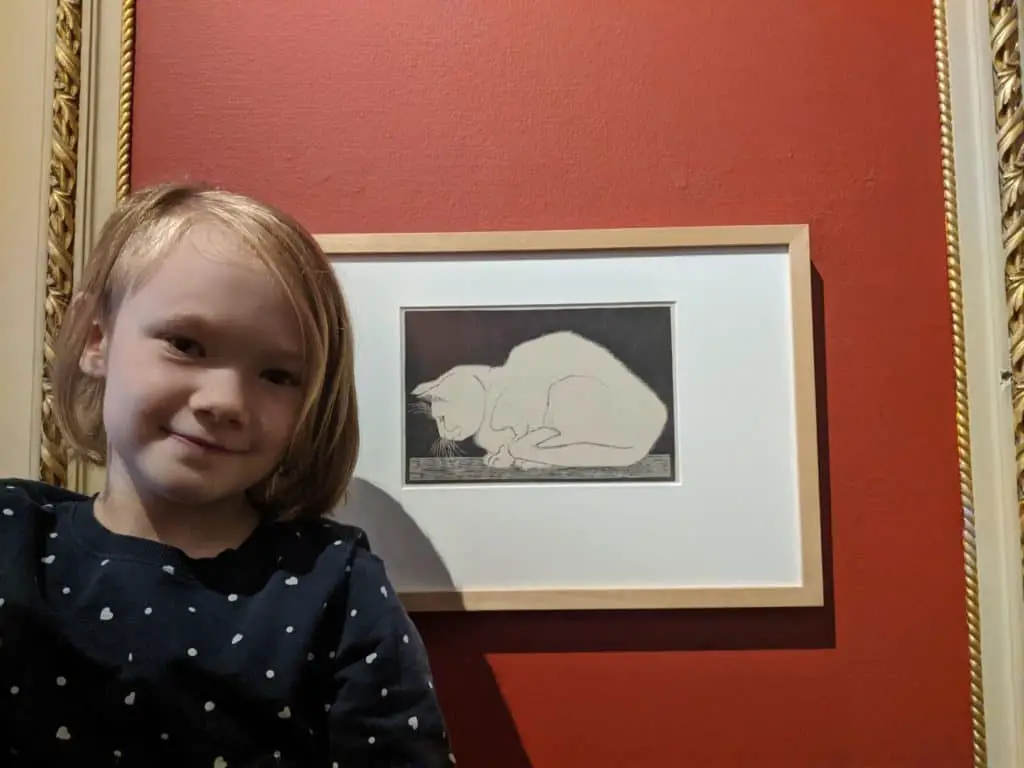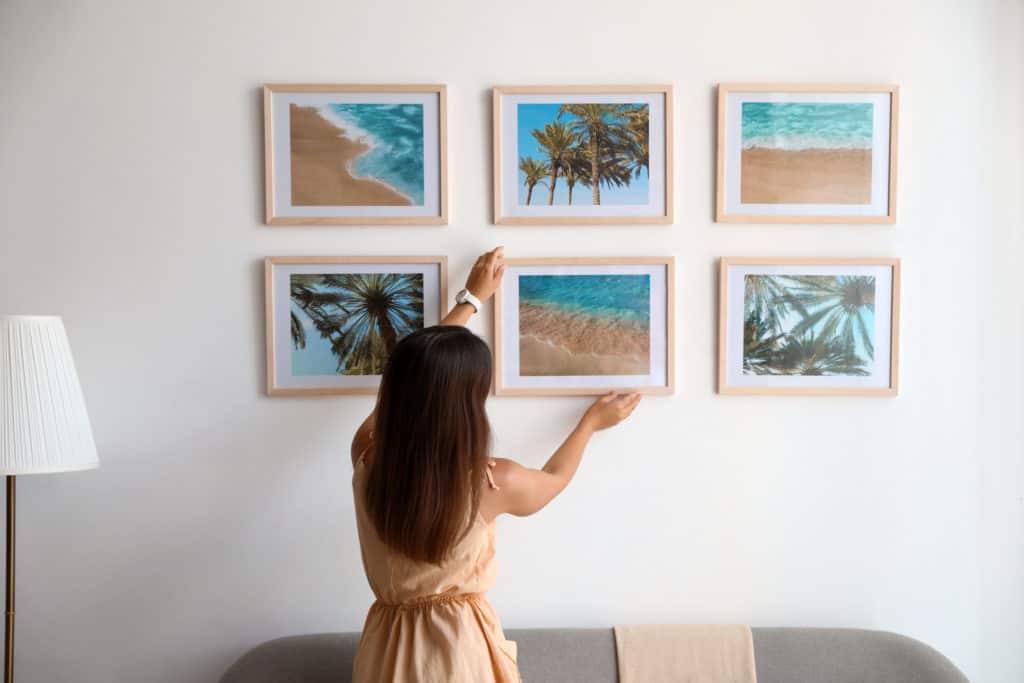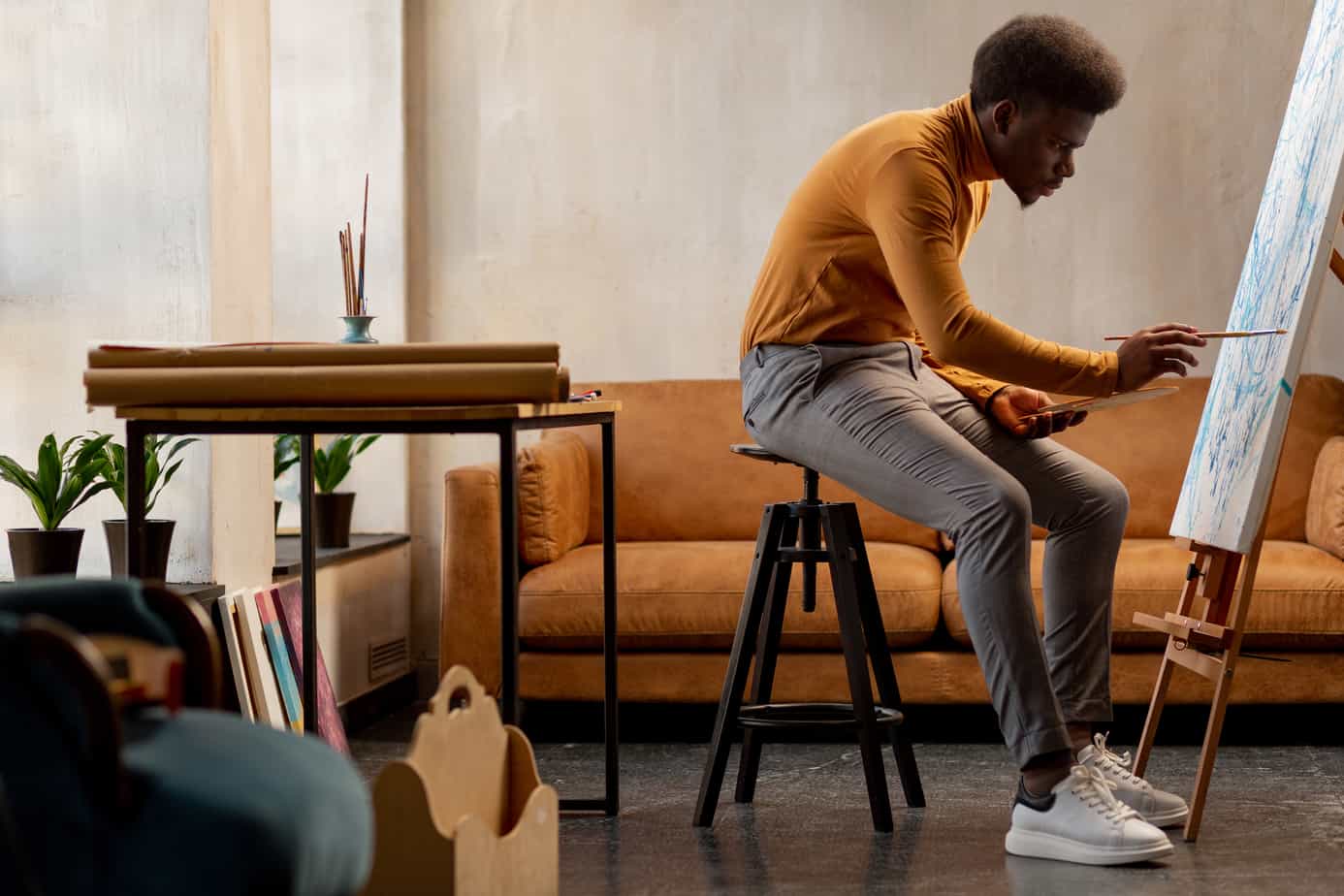So, you want to buy art. But with so many types, techniques, artists, eras, and other options, many first-time collectors want to know how to identify your art style.
Art buyers and collectors can identify their art style by noting current home decor, watching reality TV, window-shopping on art auction sites, and visiting galleries and museums. Personal heritage and ancestry influence a buyer’s likes. A personality test may clue beginners into their artwork preferences.
These are some off-the-wall (joke intended) ideas, so allow me to describe each in more detail.

Current Home Decor Style
When trying to find your art style as a collector, you may first want to consider your home’s current decor style. As most collectors display their pieces around their homes, they will want to make sure that their art matches their home’s overall aesthetic.
If you plan on catering your art to your home’s aesthetic, you will want to consider the current color of your walls, the style of your furniture, and any other decor and existing artwork. For example:
- If you currently have a bright, minimalistic home, then modern art, abstract art, or contemporary art pieces may be the way to go.
- If you’re into antique collecting, then you may want more classic, renaissance-style art with an earthier color palette.
Alternatively, you may decide that your home needs a style makeover. If that is the case, you can always change your home style to better suit a target artistic style.
For example, if you want to incorporate pop art into your home, you may want to add colorful decor/furniture to your home, such as colorful blankets, rugs and throw pillows, or colorful statement furniture pieces.
It’s hard to decide whether to fit your home into your artistic style or buy artwork that fits your home. Perhaps you do both with a full alteration from a professional.
For the artists looking for inspiration, take a look at our list of 31 ideas to connect with your creative muse.
Watch Reality-TV
Reality TV often offers excellent inspiration for your home and art collections. Shows like Home Makeover, Tiny Home, Blown Away, and even cooking shows are great resources for finding art styles and aesthetics to use in your home and collections.
Home makeover shows are beneficial in that they show whole-home aesthetics and use art to complement these aesthetics. Professionals have designed these homes and often have exquisite tastes in style-pairing and accent pieces. Next time you are watching reality TV, pay attention to the set. You may be able to find some inspiration for your own style.
Do this:
- While watching, have your smartphone available.
- Pause the show whenever you see a painting, drawing, or other pieces of visual art that looks great in the space.
- Take a photo of the TV and include a close-up of the artwork.
- Take a second photo of the room where it’s displayed.
- Save these in an album on your smartphone or a private board on Pinterest.
- Review this collection of screenshots at the end of the show and the following day.
- Discard any ideas that aren’t definitive a “yes” to strengthen your collection of ideas.
You might also find inspiration while watching period pieces. Movies or TV shows often consult with art history professionals on set design. They might include an oil painting to fit an era. Alternatively, a reproduction of a painting from a surrealist artist may be the primary prop for a heist film. An introduction to an art movement may come at any point. Add screenshot photos to your collection for later review.
The more your cull your collections from reality TV, period pieces, or other entertainment, the easier it will be to narrow in on one or two style choices which will guide you into browsing art in a more common way…

Window Shop Online Art Auctions
For some, booting up their computer and browsing online auctions are their “go-to” first stop.
But:
Armed with your previous inspiration research, you’re now ready with a better sense of your target styles. Window shopping for pieces of art online will give you a better idea of what is currently available. You will be able to see which pieces are more heavily coveted, which sell for more, and which sell for less. As you browse,
- Bookmark or download close-up photos of your favorite artists.
- Make a note of why you like certain pieces. Is it
- the painting technique
- that the contemporary artist is actively using current inspiration
- because something “just fits” with your personal style
Online auctions typically divide art pieces by their styles and mediums. By paying attention to the categories of the artwork you like, you can better determine which styles you favor over others. Add the category to your digital notebook or Pinterest board.

Visit Galleries
Arguably one of the most fun ways to find your art style is to visit various art galleries. An art gallery typically has hundreds of physical pieces to look at and examine up-close. You may want to explore a variety of galleries, as some focus on particular art styles to maintain the gallery’s overall aesthetic and brand.
Visiting physical (not online) galleries gives you the ability to see the pieces’ colors in their raw, true form. They also allow you to see the pieces’ physical size and determine how they would fit in your home. Gallery patronage is especially important when searching for stained glass, sculpture, or an art form that’s better-viewed in-person.
Wait:
I’m not saying online galleries aren’t worth your time.
Online art galleries are far more accessible and easy to browse than physical galleries. You can browse through art from all over the world in a matter of seconds, gaining a broad feel of the diversity of art styles. Through the magic of keyword searching, you can effortlessly pine through pieces and styles to meet your needs.
Heritage or Ancestry
Your heritage or ancestry provides fantastic inspiration for your art style. Your art collection is a self-expression mode, and appreciating your culture and lineage through art can help you become more in touch with yourself.
Different societies and ethnicities historically have vastly different art styles. To embrace your roots more fully, you may want to explore your ancestors’ art styles.
Some examples include:
- African Art. African art typically uses bright reds and yellows, with abstract faces and figures typically being the focus. West African art also includes geometric styles, with inspiration drawn from Kente fabric.
- Asian Art. Chinese art and Japanese art uses cooler, typically earthy tones. Asian art often depicts landscapes and seascapes with fine attention to detail. It is generally impressionistic but not abstract.
- Indian Art. Indian art typically uses vibrant, saturated colors with many golds, sage greens, and indigos. Subjects of focus usually are human faces/forms and animals. Style can range from impressionism to abstract, and patterns are often a significant component.
- South American Art. South American art is typically very bright, bold colors and geometric shapes often play an important role. It generally is more abstract and depicts humanoid figures, deities, and animals.
This is obviously not a comprehensive list, and art styles will vary by region and gallery. But hopefully, it is enough to get you inspired to start looking into the art of your culture and ancestral history. The diversity of these styles is incredible, and searching through your ancestors’ art will definitely help you find your style and aesthetic.
As you venture further into the art world, you’ll frequently hear the name of an art historian or two specializing in certain artists, movements, and of course those dedicated to specific cultures. Note the researchers for further searches. Studying their publications can lead you to a visual artist you may not have known otherwise.
Pick a Region or Time Period
Even if you do not have roots in a particular region, you can still appreciate a region’s art. You are also not limited to investing in today’s art. The art styles of different areas and periods vary incredibly. Exploring the art of various locations and eras will undoubtedly help you hone in your art style.
Different artistic eras to look into include, but are not limited to the following movements (approximate years):
- Ancient (500 B.C. and before)
- Medieval (500 B.C. to 1500 C.E.)
- Renaissance (1400-1600)
- Romanticism (1800-1850)
- Realism (1850-present)
- Impressionism (1870-1900)
- Cubism (1900-1920)
- Modernism (1850-1940)
- Abstract Expressionism (1940-present)
Take an Art Personality Test
There are plenty of personality tests online that will help you to identify your art style. These kinds of tests will give you several pieces to look at and decide whether or not they speak to you. They will then compile your answers and help determine which styles you prefer, such as abstract, impressionism, contemporary, etc.
By taking some art personality tests from select websites, you will better identify which categories of art to look further into. This is a great starting point for beginning collectors. Some websites that have helpful art personality tests include:

Buy Cheap Commercial Reproductions and Display Them
Before investing hundreds or thousands into an art collection, it may be wise to purchase some cheap reproductions or prints to hang up on your walls. These kinds of reproductions or prints can be found online or in-home goods stores, such as Marshall’s, HomeGoods, or Target.
By first buying some cheap reproductions, you see whether or not certain styles will fit into the aesthetic of your home. Some look almost as good as the real thing, even though most are computer-generated copies. If you decide that they do not work, you will not have wasted much money, and you will be one step closer to finding your taste in art.
Print and Tape Up Example Pieces
A great (and cheap) alternative to get a feel for which kind of art style will fit best within your home is to simply print out and tape up example pieces. Any size piece can be printed with multiple pieces of paper, assembled into a grid.
By seeing the art hung on your wall, you can determine whether a different style and color combination fits well within your home and whether you want to invest in a similar piece. All you will need to do is find some examples that you like, then use a color printer to print them and some tape to hang them.
Invest When You’ve Budgeted and Saved for Originals and Prints
The last step to finding your art style as a collector is to simply begin investing, as your budget permits, in some quality original artwork or prints. Start with one piece that you really love, and you can start to build your collection from there. If your style starts to stray from the style of your first piece, that is okay–it is just part of the process.
As a collector, you will likely end up having some pieces in your possession that you no longer love, as your style may have changed along your journey. If this is the case, do not worry, you can always resell them or gift them to someone else. The important part is to start investing. Your taste will evolve along the way, leading you to finally find your true art style.



